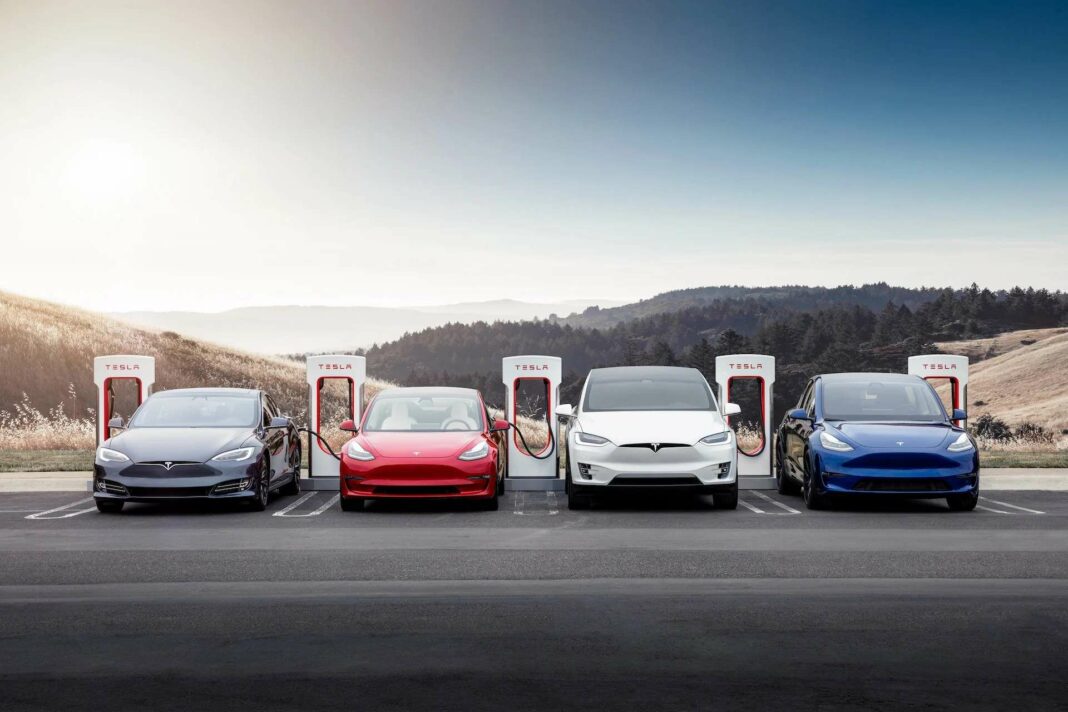Tesla offers a diverse range of electric vehicles, including the Model S, Model 3, Model X, and Model Y, all built on a shared platform. The company utilizes various battery chemistries—LFP, NMC, and NCA—to optimize performance and efficiency. The upcoming Cybertruck introduces an advanced 800-volt architecture and high-capacity 4680 cells. Tesla aims to continuously improve its battery technology through collaborations with multiple suppliers, focusing on enhancing charging speeds and range for future models.
Tesla’s Diverse Vehicle Lineup
Tesla boasts a remarkable lineup of four distinct electric vehicles: the Model S, Model 3, Model X, and Model Y. This collection features two sedans and two electric SUVs, all sharing a common platform that influences certain battery specifications. The American automaker operates four Gigafactories located in Austin, Texas; Fremont, California; Shanghai, China; and Berlin, Germany. Each of these factories sources batteries from various manufacturers, resulting in diverse battery characteristics across its models.
Understanding Battery Chemistries
The world of batteries is as varied as the vehicles they power. Tesla employs several battery chemistries, including NMC (nickel manganese cobalt), NCA (nickel cobalt aluminum), and LFP (lithium iron phosphate) batteries. Each chemistry brings unique benefits and drawbacks, impacting performance and efficiency.
LFP Batteries
Found in Tesla’s more affordable models, LFP batteries are currently the most economical option. They can withstand daily charging to 100% without compromising driving performance, and they maintain regenerative braking capabilities. Additionally, LFP batteries tend to have a longer lifespan than their cobalt-based counterparts. However, they are sensitive to extreme temperatures and are heavier for their capacity, which may limit their application in vehicles seeking a longer range.
NMC and NCA Batteries
In contrast, NMC and NCA batteries are used in Tesla’s premium models. These batteries are lighter and allow for higher charging power, making them suitable for vehicles requiring superior performance in cold weather. However, they are generally less durable and present a higher fire risk compared to LFP batteries.
Battery Insights for Tesla Models
For the Tesla Model S and Model X, the latest Standard Range versions utilize the same batteries as the Plaid and Long Range variants. These vehicles are powered by a pack with approximately 96.5 kWh capacity, comprised of 7,920 cylindrical lithium-ion cells of type 1865. Currently, Panasonic is the exclusive supplier for these flagship models, which are assembled in Fremont, California.
The Tesla Model 3, produced in both Fremont and Shanghai, offers different battery configurations. The Model 3 Propulsion features a 60 kWh LFP battery from CATL, while the Long Range variant is equipped with a 79 kWh NMC battery supplied by LG Chem. Interestingly, the Model 3 Performance shares the same battery pack as the Long Range, optimizing costs for Tesla.
Similarly, the Tesla Model Y generally mirrors the battery specifications of the Model 3. However, the Model Y produced in Berlin features BYD-supplied LFP batteries with slightly lower capacity than the 60 kWh offered by CATL in Shanghai. A notable advantage for the BYD-equipped models is their superior charging curve, allowing for faster charging times compared to their CATL counterparts.
Introducing the Tesla Cybertruck
The eagerly anticipated Cybertruck marks a significant leap in technology for Tesla, featuring an innovative 800-volt architecture. With a substantial capacity of 123 kWh and 4680 format cells, this vehicle is designed to handle high charging rates exceeding 300 kW. Currently, two variants of the Cybertruck are available in the U.S., both equipped with the same advanced battery.
The Future of Tesla Batteries
Tesla continuously seeks to enhance its battery technology by collaborating with various manufacturers, including Panasonic, LG Chem, CATL, and BYD. The company aims to scale production of its revolutionary 4680 cells, potentially integrating them into future models like the Model Y from Berlin with a structural battery pack.
While the varying battery options can create uncertainty for customers regarding what to expect upon delivery, this strategy allows Tesla to refine charging speeds and range capabilities frequently. Nevertheless, not all advancements have been straightforward, and the journey toward optimal battery technology continues to evolve.
